14 Effective Home Remedies For Cellulitis
Harness the power of nature to relieve the discomfort of this bacterial infection.
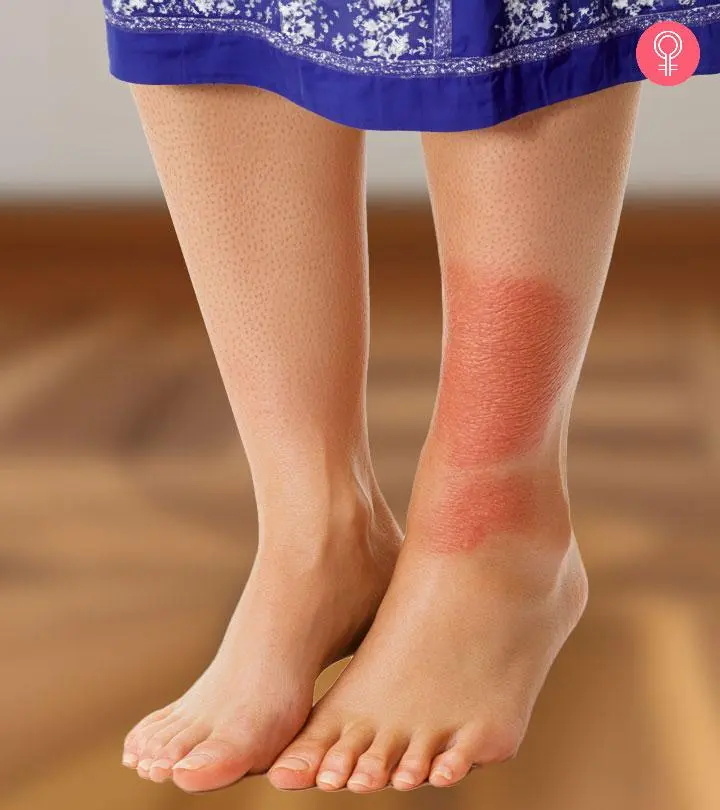
Image: Midjourney/ StyleCraze Design Team
The redness, swelling, pain, and discomfort of cellulitis can be frustrating to deal with. While the bacterial infection often requires medical treatment, finding relief might be closer than you think! Yes, home remedies for cellulitis involving simple ingredients from your pantry can help you manage the condition. These remedies may complement your cellulitis medical treatment, help soothe the symptoms, and support the healing process. So, if the idea of managing the issue naturally seems interesting, keep reading this article. It lists some effective home remedies to ease the discomfort that accompanies cellulitis and also explains the causes, symptoms, and preventive measures. So, without further ado, scroll down!
In This Article
Home Remedies To Get Rid Of Cellulitis
- Essential Oils
- Coconut Oil
- Hot Or Cold Compress
- Turmeric
- Epsom Salt Bath
- Garlic
- Fenugreek
- Apple Cider Vinegar
- Vitamins
- Honey
- Ginkgo Biloba
- Dandelion
- Grapefruit Seed Extract
- Yogurt
How To Treat Cellulitis Naturally
1. Essential Oils
a. Tea Tree Oil
You Will Need
- 2-3 drops of tea tree oil
- 1 tablespoon of coconut oil
What You Have To Do
- Add two drops of tea tree oil to a tablespoon of coconut oil and mix well.
- Gently apply this mixture to the affected area.
- Leave it on for at least 2 to 3 hours.
- Wash it off with water.
How Often You Should Do This
You must do this twice daily, preferably every morning and evening.
Why This Works
Given the wonderful antimicrobial and anti-inflammatory properties of tea tree oil, it’s no surprise that it can help in treating cellulitis and inflammation reduction. This oil is quite effective against a wide range of microbes, and can hence be used to fight the bacterial infection causing cellulitis (1). The anti-inflammatory properties of tea tree oil can also help in reducing the swelling and redness in the affected area (2).
b. Oregano Essential Oil
You Will Need
- 3-4 drops of oregano essential oil
- 1 tablespoon of any carrier oil (coconut or olive oil)
What You Have To Do
- Mix a few drops of oregano essential oil with a carrier oil of your choice.
- Apply this blend to the affected area and leave it on for 3 to 4 hours.
How Often You Should Do This
Do this 2 to 3 times every day.
Why This Works
Oregano essential oil possesses amazing antibacterial properties that can help in getting rid of the staph bacteria responsible for causing cellulitis (3). Additionally, the wound-healing potential of oregano oil can help reduce the symptoms of cellulitis and accelerate healing (4).
 Trivia
Trivia2. Coconut Oil
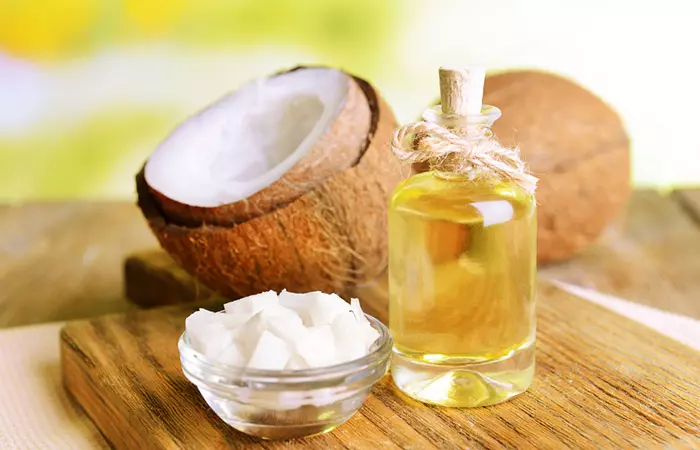
You Will Need
1 tablespoon of virgin coconut oil
What You Have To Do
- Take a tablespoon of virgin coconut oil and massage it gently on the affected area.
- Leave it on and allow your skin to absorb it completely.
How Often You Should Do This
You must do this twice daily.
Why This Works
Coconut oil has excellent antimicrobial and anti-inflammatory properties due to the presence of medium-chain fatty acids (5), (6). It also helps in keeping your skin well moisturized. These properties not only help treat cellulitis but also prevent its recurrence.
3. Hot Or Cold Compress
You Will Need
Hot bottle water or ice pack
What You Have To Do
- Take a hot water bottle or an ice pack and apply it directly to the affected area.
- Leave it on for about 15 minutes. Repeat twice.
How Often You Should Do This
You must do this 2 to 3 times every day.
Why This Works
A hot or cold compress can provide instant relief from the symptoms of cellulitis. While a hot compress can reduce the pain, a cold compress can reduce the pain and inflammation (7), (8).
4. Turmeric
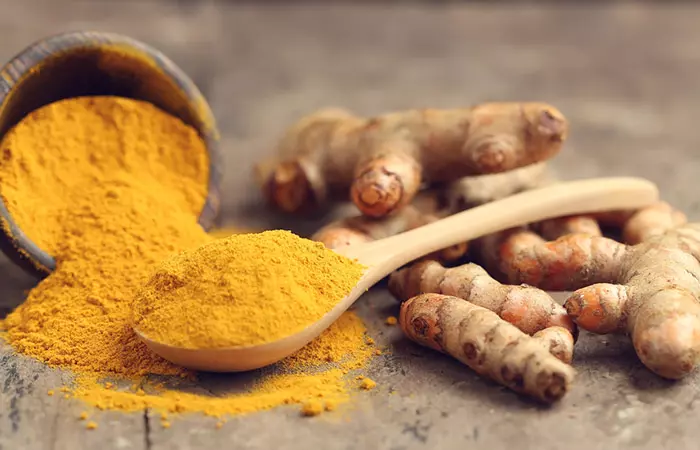
You Will Need
- 1 teaspoon of turmeric powder
- 1 tablespoon of honey
- 2-3 drops of tea tree oil
What You Have To Do
- Mix the turmeric, honey, and tea tree oil in a bowl.
- Apply this mixture to the affected areas.
- Leave it on for 15 to 20 minutes.
- Wash it off with lukewarm water.
How Often You Should Do This
Do this twice daily for a week.
Why This Works
Turmeric possesses amazing antimicrobial and anti-inflammatory properties due to the curcumin present in it (9), (10). The medicinal properties of turmeric, combined with the healing properties of honey, one of the best home remedies for cellulitis.
5. Epsom Salt Bath
You Will Need
- 1 cup of Epsom salt
- Bathwater
What You Have To Do
Add a cup of Epsom salt to your bathwater and soak in it for 15 to 20 minutes.
How Often You Should Do This
You must do this every alternate day for effective results.
Why This Works
The magnesium in Epsom salt helps reduce the inflammation, swelling, and pain associated with cellulitis (11).
6. Garlic

You Will Need
2-3 cloves of garlic
What You Have To Do
- Mince the garlic cloves to form a thick paste.
- Apply it directly to the affected areas and
- leave it on for a couple of hours.
- Wash it off with water.
- You can also chew on a few garlic cloves daily to fight cellulitis from within.
How Often You Should Do This
You must do this twice daily.
Why This Works
The major constituent of garlic, allicin, is known for its exceptional antimicrobial properties (12). The antimicrobial properties of garlic help prevent further infection, and its anti-inflammatory properties help reduce the swelling and pain often associated with cellulitis (13).
7. Fenugreek Seeds
You Will Need
- A handful of fenugreek seeds
- A bowl of water
What You Have To Do
- Soak the fenugreek seeds in a bowl of water overnight.
- The next morning, grind the soaked fenugreek seeds into a thick paste.
- Apply this paste to the affected areas and leave it on for an hour or two.
- Wash it off with lukewarm water.
How Often You Should Do This
You must do this 1 to 2 times daily.
Why This Works
Fenugreek seeds are a rich source of flavonoids that can help reduce the pain and inflammation with their anti-inflammatory and analgesic properties (14). The antimicrobial properties of fenugreek can help in destroying the staph bacteria responsible for causing cellulitis (15).
8. Apple Cider Vinegar
You Will Need
- 1-2 cups of apple cider vinegar
- Bathwater
What You Have To Do
- Add two cups of apple cider vinegar to your bathwater and soak in it for 15 to 20 minutes.
- Alternatively, you can also apply diluted apple cider vinegar directly to the affected areas.
How Often You Should Do This
You must do this once daily.
Why This Works
Apple cider vinegar, with its anti-inflammatory and antimicrobial properties, can help combat the inflammation caused due to cellulitis and also ward off the bacterial infection (16), (17).
9. Vitamins
You Will Need
- 1000 mg Vitamin C
- 400-899 IU Vitamin E
What You Have To Do
Consume 1000 mg of vitamin C and 400-899 IU vitamin E daily.
How Often You Should Do This
You must consume the given dosage of vitamin C twice daily and vitamin E once daily.
Why This Works
Supplementation with vitamins C and E is an alternative therapy for cellulitis. The intake of these vitamins promotes healing and improves the condition of your skin. Vitamin C boosts your immunity, while vitamin E promotes your overall health and the healing of your skin (18), (19). It also aids collagen formation and regeneration of new skin cells.
10. Honey
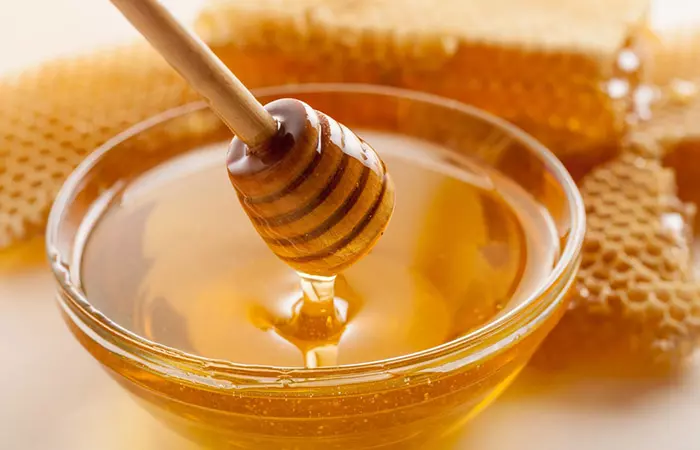
You Will Need
Organic or manuka honey
What You Have To Do
- Take some organic or manuka honey and apply it directly to the affected areas.
- Leave it on for a couple of hours before washing it off with lukewarm water.
How Often You Should Do This
You can do this 2 to 3 times daily.
Why This Works
Both manuka honey and organic honey are quite popular for their natural healing and antibacterial properties (20). The application of honey to the affected area will not just speed up healing but also ward off the bacteria responsible for causing cellulitis.
11. Ginkgo Biloba
You Will Need
- 1-2 teaspoons of ginkgo biloba herb
- 1 cup of water
- Honey (optional)
What You Have To Do
- Add two teaspoons of ginkgo biloba herb to a cup of water and bring it to a boil in a saucepan.
- Steep for 5 minutes and strain.
- Add honey to it.
- Consume the tea before it turns cold.
How Often You Should Do This
You must consume ginkgo biloba tea thrice daily.
Why This Works
Ginkgo biloba is also known as the maidenhair tree. It exhibits anti-inflammatory and antibacterial properties that can help combat cellulitis naturally (21), (22). Ginkgo biloba can also stimulate your metabolism and improve your blood circulation, which further accelerates your recovery.
12. Dandelion
You Will Need
- 2 teaspoons of dandelion herb
- 1 cup of hot water
- Honey (optional)
What You Have To Do
- Steep two teaspoons of dandelion herb in a cup of steaming hot water for 5 to 10 minutes.
- Strain and add some honey.
- Drink the tea before it turns cold.
How Often You Should Do This
Consume dandelion tea thrice daily.
Why This Works
Dandelion is a flowering plant that is widely used for its medicinal benefits. The roots of this plant possess antimicrobial properties, and its other constituents exhibit anti-inflammatory activities (23), (24). Therefore, consumption of dandelion tea is one of the most effective home remedies for cellulitis.
13. Grapefruit Seed Extract
You Will Need
- 5-10 drops of grapefruit seed extract
- 5 ounces of water
What You Have To Do
- Add a few drops of grapefruit seed extract to water and mix well.
- Consume this daily for best results.
How Often You Should Do This
Do this thrice daily.
Why This Works
Grapefruit seed extract (GSE) exhibits antimicrobial activities against a wide range of pathogens (25). They can help in eliminating the staph bacteria responsible for cellulitis. Additionally, grapefruit seed extract is also anti-inflammatory and can help reduce the pain and inflammation (26).
14. Yogurt
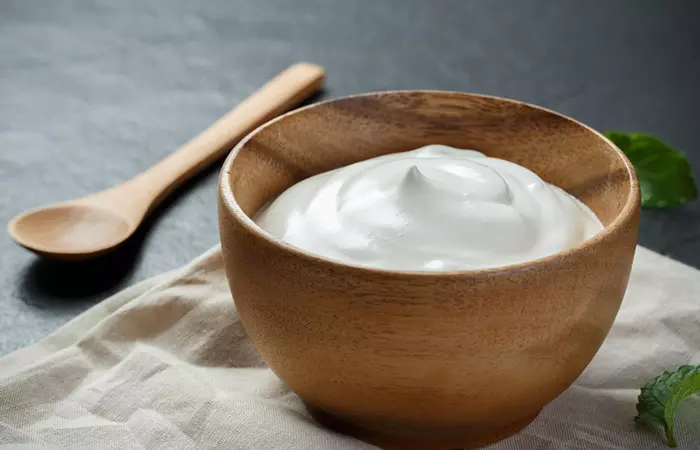
You Will Need
1 bowl of plain yogurt
What You Have To Do
- Consume a bowl of plain yogurt.
- You can also apply some yogurt to the affected areas.
How Often You Should Do This
Do this once daily.
Why This Works
Yogurt is a natural source of probiotics, i.e., it helps increase the number of good bacteria in your body to fight cellulitis. It also possesses anti-inflammatory properties that help reduce the swelling and pain in the affected area (27).
You can follow any of the above remedies to treat cellulitis. In addition, you can also follow a diet containing foods like beans, bell peppers, berries, cashews, citrus fruits, egg whites, green vegetables, tomatoes, red and white meat that have essential amino acids, and micronutrients that help in collagen formation. Proper nutrition, hydration, exercise, and enough rest may also help fasten the healing process and improve immune system support. This may help in regeneration of new skin. It is best to see a healthcare provider if none of these remedies work and your symptoms worsen or persist. This way you will get prompt medical treatment and avoid consequences like sepsis.
Tony Johnson, a Hawaiian blogger, recounted how he treated his cellulitis in a natural way. He writes, “I refined my diet to include lots of fresh garlic, fresh vegetable juice with beets, vinegar tonics, and cut out all fruit and carbs. I tested different foods and realized my liver needed a break, eating raw cream or raw steak created visible effects on the infection, and my liver could not keep up with filtering the toxicity from my blood (i).”
It’s important to take cellulitis seriously and start treatment immediately. Delaying treatment may lead to serious tissue damage and other complications. But, have you ever wondered why it occurs in the first place? Having a better understanding of the condition can help you decide the appropriate ways to deal with it. Keep reading.
What Is Cellulitis?
Cellulitis is a bacterial infection of the skin and the tissues beneath it, which is caused by bacteria
. This infection usually affects the deeper layers of the skin like the dermis and subcutaneous tissues.
Cellulitis, according to this report, is a prevalent illness that primarily affects middle-aged and older persons. Cellulitis affects men and women equally, with no statistically significant difference. Cellulitis affects around 50 patients in every 1000 patient-years.
What Causes Cellulitis?
Cellulitis is mainly caused by the Staphylococcus and Streptococcus bacteria. This infection occurs when these bacteria enter the skin via cuts or cracks. Skin injuries or wounds like cuts, insect bites, and surgical sites are the common sites that may harbor an infection.
Some factors can also increase your risk of getting infected. They include:
- Weakened immunity
- Diabetes
- A family history of cellulitis
- Skin conditions like eczema and athlete's footi A contagious fungal infection that affects the area between the toes and is characterized by a pruritic red rash.
- Diabetes
Now, let’s look at the different symptoms that may result from cellulitis.
What Are The Signs And Symptoms Of Cellulitis?
The most common signs and symptoms of cellulitis are:
- The affected area becomes tender and painful to touch.
- Red and inflamed skin.
- A growing skin sore or rash.
- The skin looks tight, glossy, and may even be swollen.
- The affected area feels warm.
- A pus-filled abscess in the affected area.
A more serious cellulitis infection can cause the following symptoms:
- Chills and tremors
- Fatigue
- Dizziness
- Muscle aches
- Frequent sweating
And if you happen to notice any of the symptoms listed below, you must be careful as these are the signs that your infection is spreading.
- Drowsiness and weariness
- Lethargy
- Blistering of the skin
- Red streaks on the skin
Cellulitis can occur anywhere on your body, and based on the same, it is classified into different types.
What Are The Different Types Of Cellulitis?
Cellulitis is mainly classified into five types:
- Orbital Cellulitis: When the infection occurs inside the sockets of the eyes, it is termed as orbital cellulitis. Eye injuries, sinus infections, and infections of the middle ear or teeth increase the risk of orbital cellulitis.
- Perianal Cellulitis: A cellulitis infection in the anal region is referred to as perianal cellulitis. This infection is quite common in children, and more so in boys than girls.
- Periorbital Cellulitis: This infection develops around the eyelids and is more common in children. Those suffering from insect bites and eye injuries are more prone to developing this infection.
- Facial Cellulitis: This is a facial infection that affects people of all ages and may lead to serious complications if left untreated.
- Breast Cellulitis: Breast cellulitis affects the skin on the breasts. Women with a history of lumpectomyi A second-stage cancer treatment involving the removal of cancer cells or other abnormal tissue from the breast through surgery. or those who have breast cancer are at a higher risk of developing this infection.
 Trivia
TriviaThese are various types of cellulitis. But can it spread from person to person? Let us find out in the next section.
Is Cellulitis Contagious?
No, cellulitis is not contagious. You cannot catch it by touching or being near someone who has it. However, anecdotal evidence suggests that it may spread if you have cuts, wounds, surgical incisions, or skin injury and come in contact with the person carrying the infection-causing bacteria. Therefore, always maintain proper hygiene and avoid contact with open wounds. Also, if you have been in close contact with someone with cellulitis and suspect that you have it, seek medical help immediately.
Listed below are a few tips to prevent contracting the infection and avoid recurrence.
Prevention Tips
- If you break your skin, clean the affected area and apply an antibiotic immediately.
- Cover your wound with a bandage and change it daily.
- Monitor your wound closely for unusual redness, drainage or pain as these could hint at an underlying infection.
- Keep your skin moisturized to prevent it from cracking easily.
- Avail early treatment for infections like athlete’s foot.
- Wear protective equipment while working or playing.
Despite taking these precautions, if you end up developing this skin condition, make sure that you treat it as early as possible. Otherwise, it can lead to certain complications.
Potential Complications Of Cellulitis
, a double board-certified dermatologist and a Fellow of the American Academy of Dermatology, says, “It might lead to bacteremia, endocarditis, osteomyelitis, toxic shock syndrome, or sepsis if left untreated.”
If left untreated, cellulitis can spread throughout your body and lead to the following complications:
- Blood infection
- Bone infection
- Inflamed lymph vessels
- Gangrene
Infographic: Top 5 Natural Ingredients To Treat Cellulitis At Home
Cellulitis causes red swollen skin that should be treated immediately. You can treat the symptoms at home with a few natural ingredients from your pantry. These ingredients are cost effective and you can comfortably speed up the healing process right from your house.
Check out the infographic below to know which natural ingredients can help you to treat cellulitis at home. Illustration: StyleCraze Design Team
Cellulitis, a bacterial infection, affects multiple layers of the skin and needs to be treated as early as possible to avoid the risk of gangrene or sepsis. It develops when certain bacteria enter the deeper layers through cuts or cracks on the skin and may present symptoms such as redness, inflammation, tenderness, expanding sore or rash, pain, and pus formation. You may be able to treat cellulitis without antibiotics but with a holistic approach by using certain home remedies like coconut oil, yogurt, honey, turmeric, dandelion, essential oils, etc. However, get medical help right away if you experience any lingering or worsening symptoms such as chills, fever, headaches, muscle aches, blisters, or red spots on your skin. Medical experts can accurately diagnose your condition and determine whether you need antibiotics or additional care.
Frequently Asked Questions
Is baking soda effective for cellulitis?
“It is not effective, as cellulitis is an infection of the deeper layers of the skin,” says Dr. Vladyslava Doktor.
What is the fastest way to get rid of cellulitis?
Dr. Doktor advises, “Seek medical help immediately and start on proper treatment, usually antibiotics.”
Which areas of the body are mostly affected by cellulitis?
Although cellulitis can affect any part of the body, it most commonly occurs in the lower legs and damaged and inflamed areas of the body.
How long does it take to cure cellulitis?
If you begin your treatment right away, cellulitis may go away in just three days. But if your symptoms begin to worsen, it may take 7-10 days or even longer for you to heal completely.
What is the best cream for cellulitis?
A good anti-itch or antiseptic topical cream can help treat cellulitis. However, you must apply the cream gently and remember not to rub it on your skin as it may aggravate the condition. For mild cases of cellulitis, your doctor may prescribe a tetracyclinei An antibiotic drug that inhibits protein creation within bacterial cells and is used to treat a wide range of bacterial infections. agent like doxycycline. But if you are looking for a natural alternative, you can follow any of the remedies listed in this article.
What are the medicines used to treat cellulitis?
Your doctor may prescribe antibiotics such as penicillin to recover from cellulitis. Nonetheless, to accelerate your recovery from this infection, you can supplement it with any of the remedies given in this article.
Can cellulitis go away naturally?
Mild cases of cellulitis may go away naturally without any kind of treatment. However, there is a risk of the infection worsening and getting into the bloodstream, which can prove to be fatal.
Does drinking water help cellulitis?
Yes, drinking adequate water is necessary to facilitate recovery from cellulitis. It will not only keep the region hydrated but also improve blood circulation to the area so that it heals well.
Should you shower with cellulitis?
Yes. It is necessary to keep the area clean, so you can use a mild and alcohol-free body wash to gently cleanse the area. Pat it dry once you step out of the shower.
Does itching mean cellulitis is healing?
In general, yes. As cellulitis heals, the area becomes dry and flaky, which can make it itchy.
Key Takeaways
- Cellulitis occurs Streptococcus bacteria attack on your open wounds and cuts.
- Watch out for inflamed skin, redness, rash, dizziness, and abnormal sweating; these are some of the common symptoms of cellulitis.
- Certain home remedies like tea tree oil, coconut oil, turmeric, honey, and Epsom salt bath can help alleviate the infection and promote better healing.
- Keep your wound clean and dry to quicken the process of recovery.
Illustration: Home Remedies For Cellulitis - How To Treat It Without Antibiotics

Image: Stable Diffusion/StyleCraze Design Team
Explore the comprehensive guide to cellulitis, including its causes, symptoms, diagnosis, and treatment options. This informative video gives quick facts and essential insights into this common skin infection.
Personal Experience: Source
StyleCraze's articles are interwoven with authentic personal narratives that provide depth and resonance to our content. Below are the sources of the personal accounts referenced in this article.
i. The Staph!;https://punastyle.wordpress.com/2010/10/16/the-staph/
Read full bio of Dr. Bhakti Kapse
- Dr. Vladyslava Doktor is a board-certified dermatologist with 7 years of experience. She focuses on skin cancer, rosacea and acne, hair loss, cosmetic medicine, and integrative medicine and aims to use all of her skills, qualifications, and interests to give her patients a well-rounded dermatological treatment.
 Dr. Vladyslava Doktor is a board-certified dermatologist with 7 years of experience. She focuses on skin cancer, rosacea and acne, hair loss, cosmetic medicine, and integrative medicine and aims to use all of her skills, qualifications, and interests to give her patients a well-rounded dermatological treatment.
Dr. Vladyslava Doktor is a board-certified dermatologist with 7 years of experience. She focuses on skin cancer, rosacea and acne, hair loss, cosmetic medicine, and integrative medicine and aims to use all of her skills, qualifications, and interests to give her patients a well-rounded dermatological treatment. - Dr. Anna Chacon, MD, FAAD, is a double board-certified dermatologist with over 7 years of experience. She has authored many peer-reviewed articles and managed clinical research studies during her fellowship. She completed her medical school in the PLME (Program of Liberal Medical Education) at Brown University.
 Dr. Anna Chacon, MD, FAAD, is a double board-certified dermatologist with over 7 years of experience. She has authored many peer-reviewed articles and managed clinical research studies during her fellowship. She completed her medical school in the PLME (Program of Liberal Medical Education) at Brown University.
Dr. Anna Chacon, MD, FAAD, is a double board-certified dermatologist with over 7 years of experience. She has authored many peer-reviewed articles and managed clinical research studies during her fellowship. She completed her medical school in the PLME (Program of Liberal Medical Education) at Brown University.
Read full bio of Shaheen Naser
Read full bio of Arshiya Syeda
Read full bio of Dipti Sharma







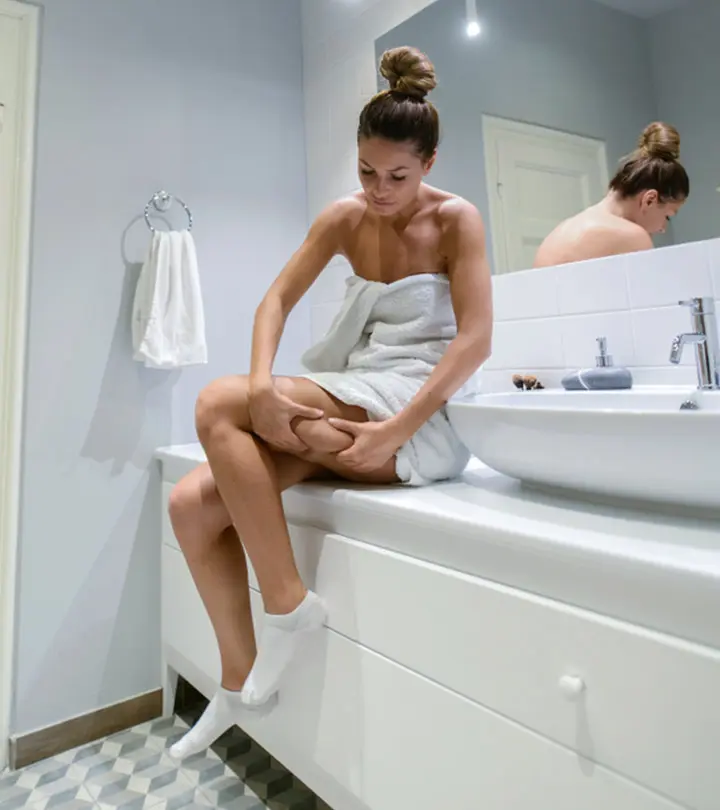
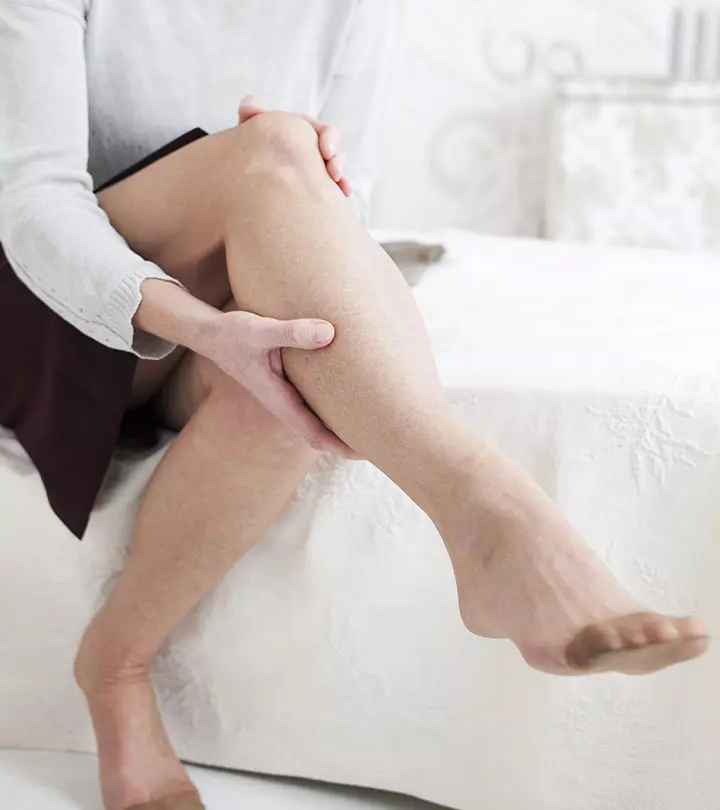

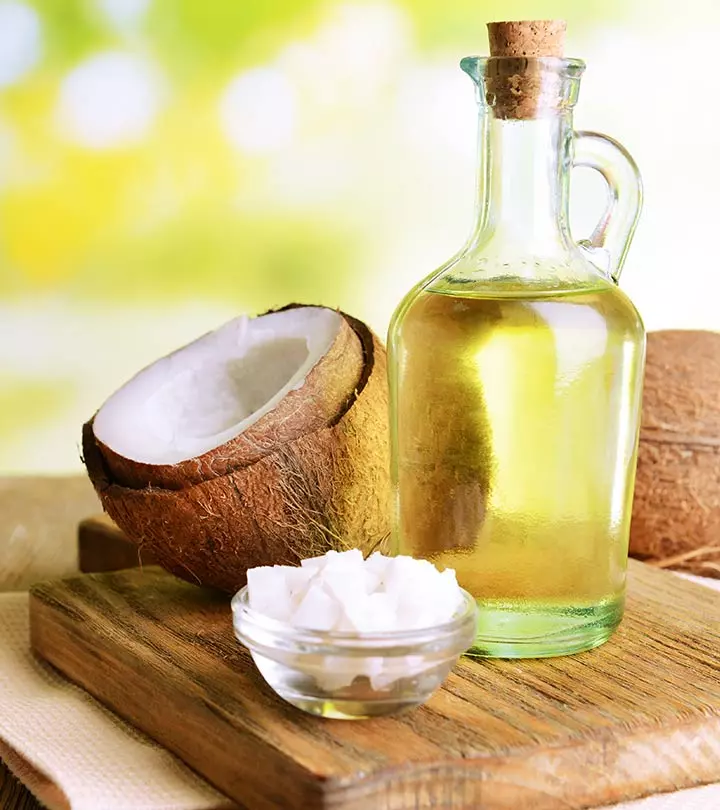
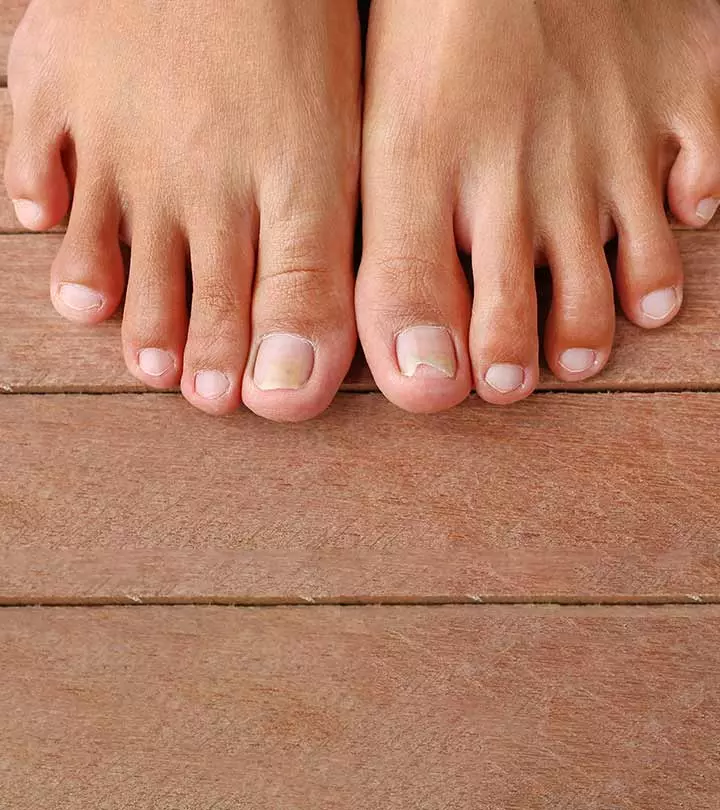







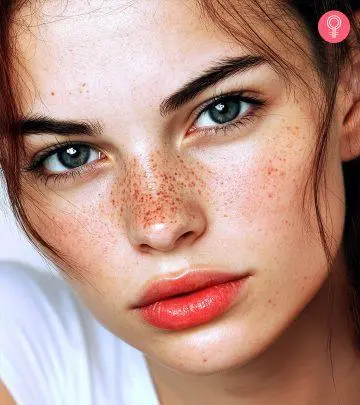




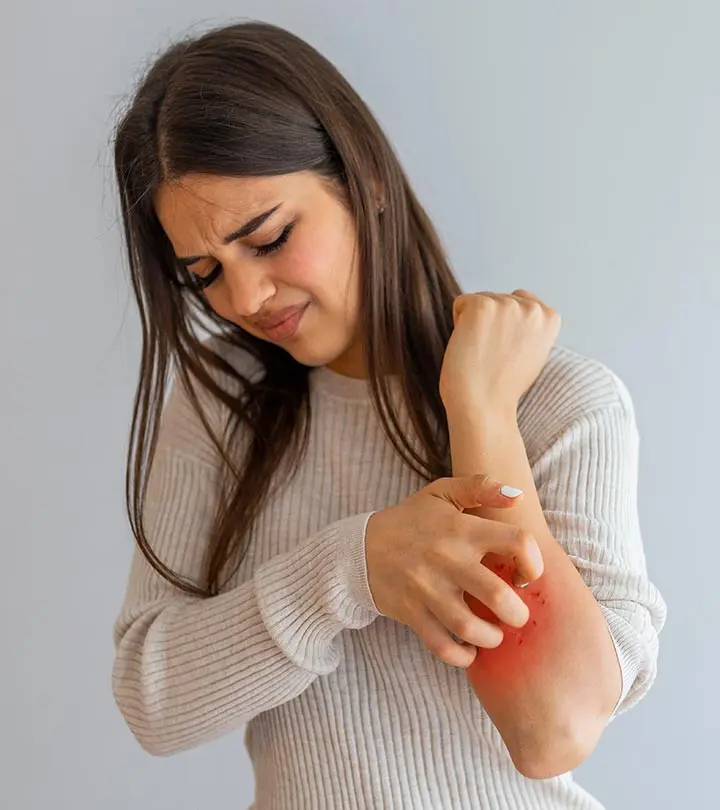

Community Experiences
Join the conversation and become a part of our empowering community! Share your stories, experiences, and insights to connect with other beauty, lifestyle, and health enthusiasts.